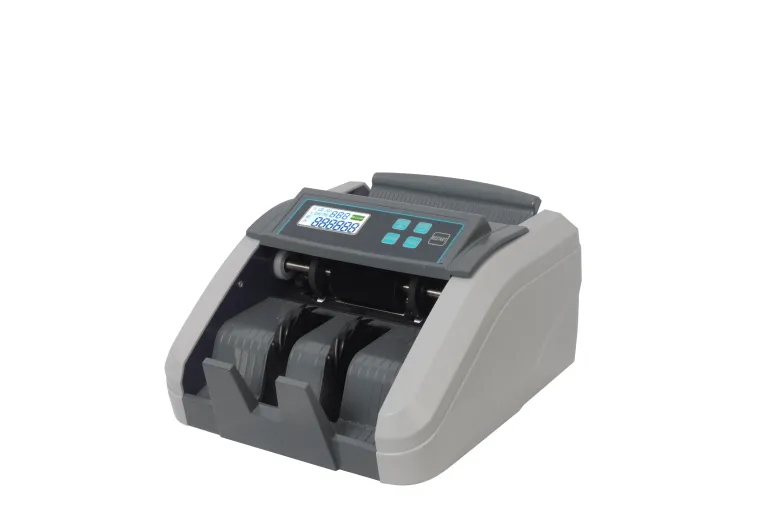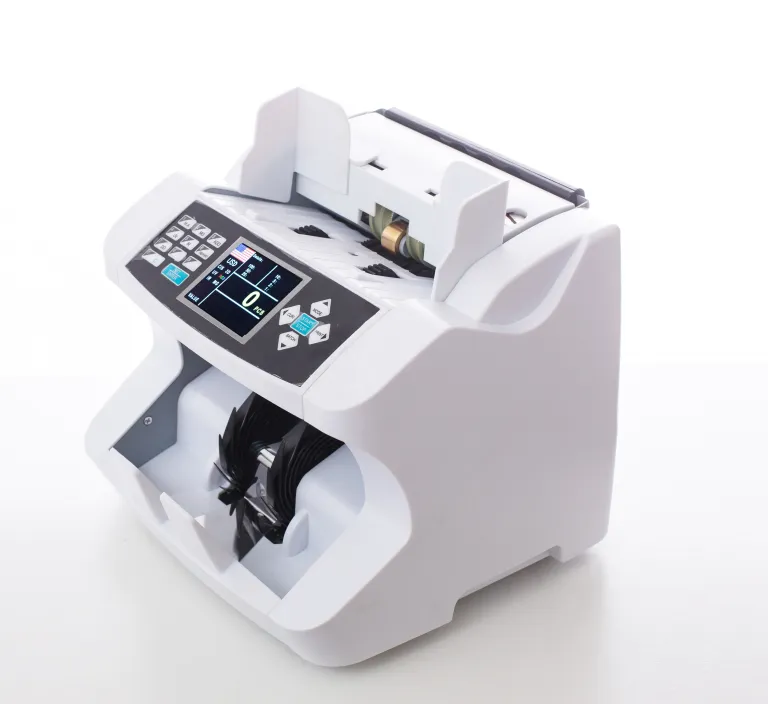How Does A Currency Counting Machine Work?
Currency-counting machines have become indispensable in various sectors, from banks and retail stores to casinos and businesses that handle large volumes of cash daily. These machines streamline the process of counting money, ensuring accuracy, efficiency, and security. Understanding how these machines work can help you appreciate their value and make an informed decision when choosing one for your needs.
In this article, we’ll dive into the inner workings of currency counting machines, exploring their components, functionality, advanced features, common issues, and benefits. By the end, you'll have a comprehensive understanding of how these machines make cash handling easier and more secure.
Key Components Of A Currency Counting Machine
Understanding the key components of a currency counting machine is crucial to grasp how these devices function seamlessly to provide accurate and efficient counting.
Hopper
The hopper is the entry point of a currency counting machine where the notes or coins are loaded. It’s crucial for the hopper to be designed in a way that allows for the smooth feeding of currency to avoid jams and ensure accurate counting. The size of the hopper can vary, with some machines capable of holding larger quantities of currency, making them suitable for high-volume environments.
Feeding Mechanism
The feeding mechanism moves the currency from the hopper into the counting section. This part of the machine is critical for ensuring each note is fed individually and smoothly into the counting sensors. Proper feeding is essential for accurate counting, as multiple notes feeding simultaneously can lead to errors or jams. Advanced feeding mechanisms are designed to handle various types of currency, including new and worn notes.
Counting Sensors
Counting sensors are the heart of a currency-counting machine. These sensors use optical, magnetic, and sometimes infrared technology to detect and count each note as it passes through the machine. Optical sensors detect the presence of notes, magnetic sensors can identify the magnetic properties of ink used in genuine currency, and infrared sensors help in counterfeit detection. The accuracy and speed of counting depend largely on the quality and calibration of these sensors.
Display Unit
The display unit shows the count results and any error messages. It provides a clear and user-friendly interface for operators to read the number of notes counted, total value (in the case of mixed denomination machines), and any issues such as jams or detection of counterfeit notes. Modern machines may have digital displays that offer additional information, such as batch counts and operational status.
The Working Principle Of Currency Counting Machines
To understand how currency counting machines operate, it's essential to look at the entire process, starting from loading the currency to displaying the final count.
Loading the Currency
Properly loading the currency into the machine is the first step for accurate counting. Notes should be placed neatly in the hopper, aligned correctly, and free of major folds or tears. Ensuring the currency is properly loaded helps prevent jams and ensures the machine can count accurately and efficiently. Some machines come with guides or adjustments to help align the notes correctly.
Currency Feeding Process
Once loaded, the feeding mechanism guides the notes one by one into the counting sensors. The machine uses a combination of rollers and belts to move the currency through the machine. This process needs to be smooth to avoid multiple notes feeding simultaneously, which can lead to counting errors or jams.
Detection and Counting Mechanism
As the currency passes through the counting sensors, the machine uses various technologies to detect and count each note. Optical sensors count the physical presence of each note, while magnetic sensors check for the magnetic properties in the ink used on genuine currency.
Infrared sensors can detect specific patterns and security features that are invisible to the naked eye. These combined technologies ensure each note is counted accurately and any counterfeit notes are detected.
Displaying the Results
After counting, the machine displays the results on its display unit. This includes the total number of notes counted and, in the case of mixed denomination machines, the total value of the currency. The display may also show error messages if issues were detected during the counting process, such as jams or counterfeit notes. Operators can quickly see the results and take any necessary actions based on the displayed information.
Advanced Features In Modern Currency Counting Machines
Modern currency-counting machines come equipped with advanced features that enhance their functionality and provide additional benefits for users.
Counterfeit Detection
Counterfeit detection is a crucial feature in modern currency counting machines. These machines use various technologies, such as ultraviolet (UV) light, magnetic (MG) ink detection, and infrared (IR) sensors, to identify counterfeit notes.
UV detection checks for the presence of fluorescent markings, MG detection identifies magnetic properties in the ink, and IR sensors detect patterns not visible to the naked eye. These features help ensure that businesses do not accept counterfeit currency, protecting them from financial loss.
Mixed Denomination Counting
Mixed-denomination counting machines can identify and count notes of different values in a single batch. This feature is particularly useful for businesses that handle large volumes of cash with varied denominations.
The machine recognizes the value of each note and provides a total monetary value rather than just the number of notes. This feature saves time and reduces the need for manual sorting and counting.
Batch Counting and Stacking
Batch counting allows operators to set a specific number of notes to be counted in each batch. The machine will stop once the preset number is reached, making it easier to prepare deposits or manage cash drawers. Stacking mechanisms further streamline the process by neatly organizing the counted notes into stacks, ready for bundling or further processing.
Connectivity and Integration
Modern currency-counting machines often come with connectivity options that allow them to integrate with other systems, such as point-of-sale (POS) systems or accounting software. This integration enables seamless data transfer, improving the accuracy and efficiency of financial operations. Connectivity options may include USB, Bluetooth, or network interfaces, providing flexibility in how the machines are used within different business environments.
Conclusion
Currency-counting machines are indispensable tools for businesses and institutions that handle large volumes of cash. They offer significant advantages in terms of time efficiency, accuracy, and security. By automating the counting process, these machines reduce the risk of human error and enhance operational efficiency.
Understanding the inner workings of these machines, from the hopper to the counting sensors, helps you appreciate their complexity and value. Advanced features like counterfeit detection, mixed denomination counting, and connectivity options further enhance their utility, making them a vital asset for modern cash management.
When choosing a currency counting machine, consider your specific needs, budget, and the available advanced features. Staying informed about the latest technological advancements and future trends can help you make an informed decision that meets your business requirements.

Huaen PRODUCTS







